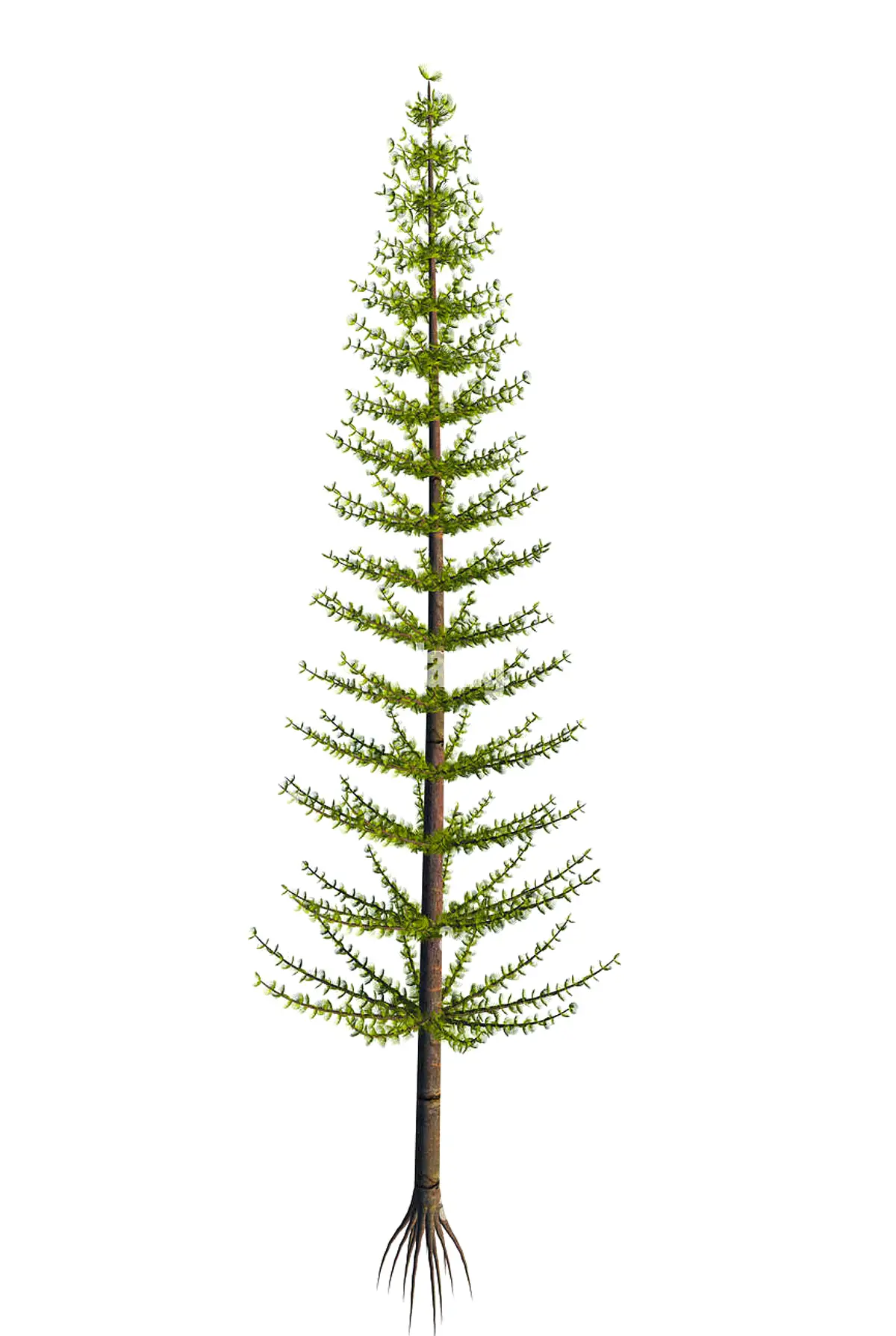Contents
CLASSIFICATION OF CALAMITES
Kingdom :- Plantae
Division :- Pteridophyta
Sub-division :- Sphenopsida
Class :- Polypodiopsida
Order :- Calamitales
Family :- Calamitaceae
Genus :- Calamites
STUDY THE RECONSTRUCTED PLANT
- Genus Calamites appeared in Upper Devonian, and was most abundant during Carboniferous and became extinct early in the Triassic.
- The plant was 20 to 30 meters tall tree.
- The tree was arborescent with horizontal rhizome, aerial shoots and whorls of leaves.
- Rhizomes were differentiated into nodes and internodes. Nodes bore whorl of adventitious roots.
- Aerial branches were borne on the upper side of rhizome. These wee generally constricted at the place where these joined the thizome.
- The lowermost nodes of the erect branches produced whorls of adventitious roots.
- The aerial branches were highly articulated. The leaves were borne in whorls at the upper nodes. These also had branches borne in pairs.
- Each node had a single whorl of leaves. The leaves were smaller and perhaps were photosynthetic organs. These were lanceolate, linear or spathulate with a single vein.
- Genus Calamites is divided into subgenera on the basis of mode of branching and general growth pattern.
- Eucalamites-bore one to many branches at the node.
- Calamitina-bore branches in whorls which were separated by a series of branchless nodes.
- Diplocalamites-2 to 3 branches produced with branches alternating from node to node.
- Crucicalamites-large number of branches produced at each node.
- Stylocalamites-wihout branches or branches fewer and irregularly scattered.
STUDY OF THE STEM ANATOMY
- The petrified calarnitean stem of three form genera viz. Arthropitys, Calamodendron and Arthroxyulonn have been recognised. They have been established to belong to Calamites and their special names are used only when necessary.
- Petrified stems of Calamites are frequent in the coal balls and other carboniferous petrifactions.
- The stem was ridged and furrowed which alternate at each successive internodes.
- The transverse section of internode shows endarch siphonostele with secondary xylem produced by vascular cambium.
- There was a large hollow central pith cavity. It became solid at nodes forming a diaphragm.
- Surrounding the pith was a ring of more than a dozen primary collateral vascular bundles.
- The protoxylem was endarch and was represented by carinal canal formed due to dissolution of many elements.
- The metaxylem was very less in amount. It was composed of scalariform and pitted tracheids.
- Cambium occurred in between xylem and phloem.
- Secondary xylem was formed on the inner face of cambium. It was made of tracheids and rays. Tracheids were arranged in radial rows. These showed scalariform thickenings or multiseriate bordered pits on the radial walls. Secondary xylem formed wedge-shaped zones separated by interfascicular rays.
- The rays show considerable diversity in structure and serve as the basis for generic distinction.
- The tissues outside the secondary xylem showed inner cortex made of thin walled parenchyma with resin canals.
- The cells of the outer cortex were also thin walled but were much smaller than the cells of the inner zone.
- . The cortex was as wide as xylem and formed thick bark (also termed periderm) that was smooth externally
IDENTIFICATION OF LEPIDODENDRON
- DIVISION – Pteridophyta
- True roots generally present (except in Psilopsida),
- True vascular strand present.
- Sub-division:- Sphenopsida
- Stem branched, articulated, ridged and furrowed with distinct nodes and internodes,
- Leaves microphyllous, small, scaly and arranged in whorls at nodes.
- Order– Calamitales
- Tree-like sporophytes with considerable secondary thickening of stem and branches.
- Strobilus with central articulated axis which bore alternate whorls of sporangiophores and sterile bracts
- Family– Calmitaceae
- Stem branched, branches in whorls at nodes.
- Stem shows endarch siphonostele
- Genus – Calamites
- Suberranean rhizome present.
- Lower nodes producing adventitious roots.
- Vallecular canal absent.
- Periderm mayor may not be formed.


Leave a Reply